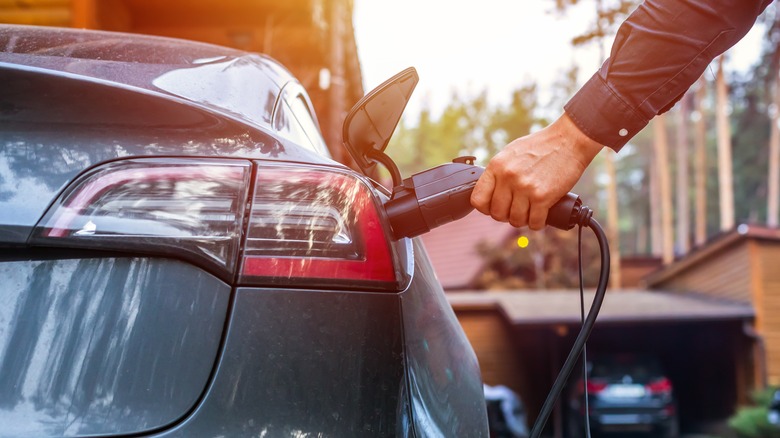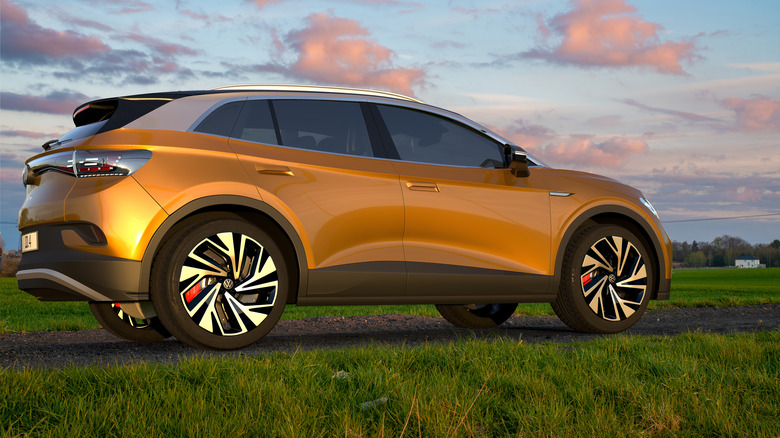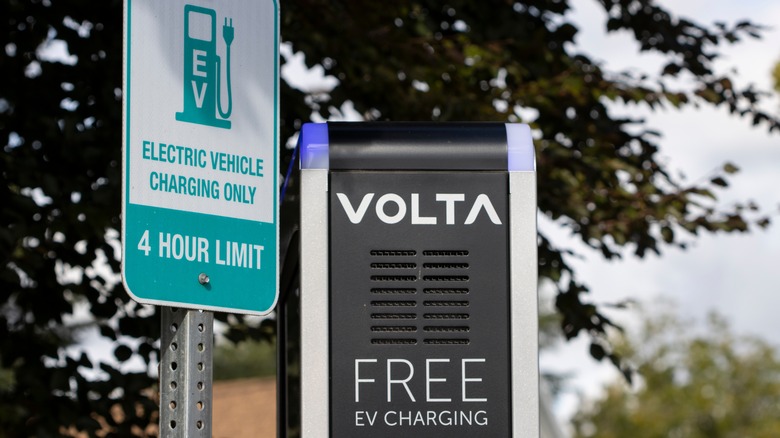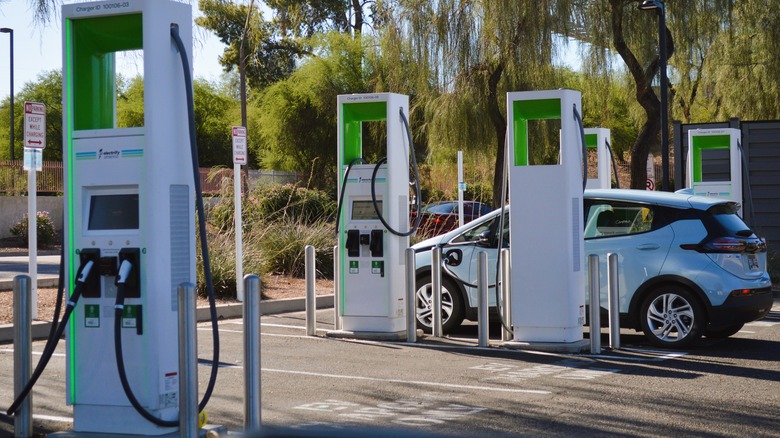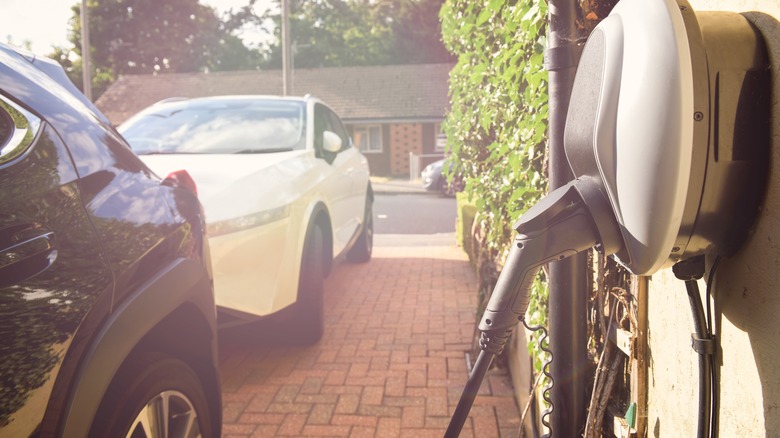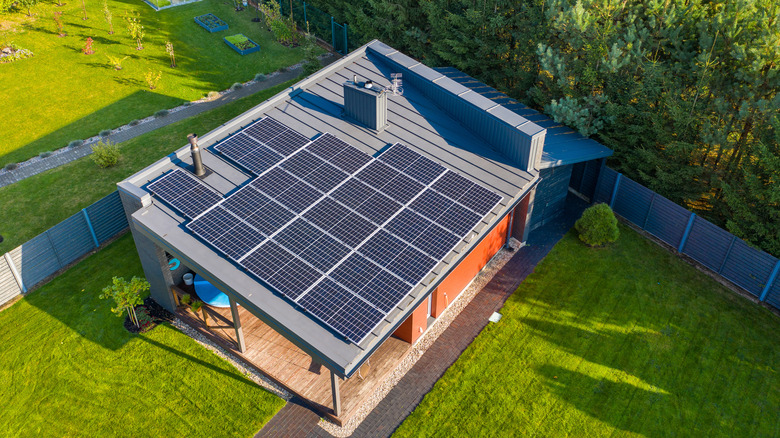5 Ways To Save Money When Charging Your EV
If you drive an electric vehicle, most of your expenses will be spent on "fuel." The advantage is, you're more likely to spend less to charge an electric vehicle than an ICE (internal combustion engine) vehicle. On top of that, you would need to service an electric vehicle occasionally — but it's, on average, 50% cheaper than a gasoline vehicle. Of course, electric vehicles are not all sunshine and rainbows — it could be more expensive to insure and repair your EV than a gasoline vehicle. It could also be a while before the EV industry embraces universal chargers that are compatible with every electric vehicle.
However, if you own an electric vehicle, you can reduce your charging costs significantly to save money. In fact, it's possible to charge your electric vehicle for free. Besides that, if you're buying an electric vehicle in 2023, you could get a tax discount of up to $7,500 if it qualifies for the federal EV tax credit. There is no better time to buy an electric vehicle than right now — that's if you're looking forward to saving money. But how do you go about it if you want to minimize your EV charging costs?
Buy an EV that comes with a free charging discount
If you're planning to buy an electric vehicle, a few manufacturers offer free charging discounts to their customers. For instance, if you're buying the Hyundai Ioniq 5, Genesis GV60, BMW i4, BMW iX, Polestar 2, Porsche Taycan, and Volkswagen ID.4, you could enjoy 30 minutes of free DC EV charging (per session) for 24 months at any Electrify America network. Since DC chargers are super-fast, 30 minutes is more than enough time to charge most EVs from 0-80 percent — it could even charge faster.
Besides that, other popular EVs like the Ford F-150 Lighting, Mustang Mach-E, Volvo XC40 Recharge, Volvo XC40, and Audi e-tron models come with complimentary DC fast charging of up to 250 kWh at Electrify America stations. It's not much compared to 30 minutes of free unlimited charging (per session) for two years, but it's worth it if you want to save money.
Similarly, the Kia Niro EV comes with free DC fast charging of up to 500 kWh, while the Kia EV6 takes up to 1,000 kWh. Even Mercedes-Benz has a deal with Electrify America to offer free EV fuel top-up for 30 minutes per session using DC fast chargers — the offer is valid for two years.
In addition to that, if you buy hydrogen fuel cell electric vehicles like the Toyota Mirai and Hyundai Nexo, you can top up your hydrogen fuel for free up to $15,000.
Find free EV charging stations
One of the best perks of driving an electric vehicle is that you can access free charging stations on business buildings, college campuses, shopping malls, national parks, hospitals, car dealerships, and city parking garages. However, if it's difficult to find free charging stations near you, we recommend the PlugShare app. You could use the PlugShare app to find out more valuable information about a charging station.
Alternatively, you could access free level 2 EV chargers at Volta charging stations. If you're using a level 2 charger at Volta, you could add 50 miles of range in two hours. What's more, the U.S. Department of Energy has set up guidelines to help employers who want to offer free charging to their employees.
At the moment, companies could be eligible for a tax credit of up to $100,000 if they're installing EV chargers at business premises. This means that we're likely to have more workplaces offering free chargers to their employees — if they haven't already.
Use EV chargers that bill per minute if you're on a road trip
In most cases, you will spend less to charge your electric vehicle if you're billed per minute, rather than per kWh. For instance, if you're fast-charging a Tesla Model 3 at Walmart, you could spend between $7.20 to $9.60 after 30 minutes if you're billed per minute. On the other hand, you could spend almost double that amount if you're billed per kWh.
However, you don't get to choose if the cost will be calculated per minute or KWh at charging stations since it depends on your state and service provider. Because of that, you should confirm on your charger service provider app which states or locations charge per minute — especially if you're planning a long-distance road trip and you want to save money. But according to Recurrent, your EV battery will charge slower when exposed to extremely cold weather. This means that if you're billed per minute during winter, it could be a disadvantage.
Charge your EV at home during off-peak hours
In most states, electricity is more expensive during the afternoon and evening hours. On the flip side, it's cheaper to refuel your electric car during off-peak hours, especially from 11 p.m. to 5 a.m. In fact, according to Energy Sage, if you connect your electric vehicle to the grid during off-peak hours, you can reduce your electricity bill by at least 50%. Nevertheless, you should talk to your electricity supplier to figure out the off-peak hours in your location.
If you have a Tesla, you can schedule it to start refueling during off-peak hours using the Tesla app. Beyond that, you can also use the Tesla app to limit the battery's charge to 80% so you could make it last longer. Most EV and home charger manufacturers also offer the same automatic charge schedule as Tesla. But if you don't have that option, we recommend you install smart plugs at home to make schedules.
Install solar panels and battery storage system at home
Solar panels and battery storage can be expensive to install at home, but they can reduce your electricity costs significantly in the long run. According to a 2022 study published by the University of South Australia, you can reduce your "annual energy cost" at home by almost 40% if you've installed solar panels and a battery storage system while driving an EV. Besides charging your electric vehicle, you can credit the utility grid the surplus energy generated from your solar panels to use later when you need it.
How much does it cost? On average, you could expect to spend at least $25,000 to install solar panels at your home. But you could reduce your cost by 30% if you're eligible for the federal tax credit. In some states, you could also qualify for tax incentives after installing solar panel systems.
The Tesla Powerwall is one of the best options if you want to install solar panels and a battery storage system at home. But you could consider other battery storage units such as Kohler and Sonnen that you can install without solar panels. This means that can offset your cost during peak hours by charging your EV using the battery storage system.
However, before you install solar panels at home, we recommend you use Google Project Sunroof to calculate if the project will be viable to save you money.
